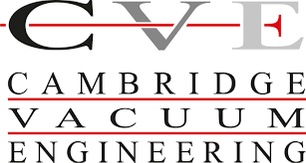
Is Your Robot System Still Compliant?
While cobots are often perceived as the "friendly face" of robotics due to their collaborative nature, it's crucial to recognise them as industrial robots requiring serious attention to safety.
The International Organization for Standardization (ISO) is updating its safety standards, ISO 10218-1 and ISO 10218-2, to reflect the technological advancements and growing use of cobots.
These changes aim to align cobot safety standards with those of industrial robots, ensuring safer applications for human-robot collaboration
Compliance and Best Practice
CE / UKCA Marking
Ensuring Regulatory Alignment for Safer Machinery
The updated ISO standards support alignment with the Machinery Directive, streamlining the path toward CE and UKCA marking. Our services help ensure your machinery meets all legal and technical file requirements.
PUWER Compliance
Meeting Legal Duties with Confidence
Demonstrating compliance with the new safety standard is essential for meeting the legal responsibility of the end-user or cobot system integrator under the Provision and Use of Work Equipment Regulations (PUWER).
Audit Trail and Traceability
Transparent Compliance from Risk to Resolution
Establishing a reliable audit trail is critical. Our team supports you with comprehensive risk assessments, clear documentation of safety measures, and traceability of decisions—all aligned with current standards.
Need help reviewing your systems against the new ISO 10218‑2 standard?
ISO 10218-2:2025 Explained
A Practical Guide to the New Robot Safety Standard
Consolidation of Collaborative Robot Safety (Cobots)
-
Previously, guidelines for cobots were in ISO/TS 15066; they're now fully integrated into ISO 10218‑2
-
Formal definitions introduced: hand-guided control (HGC), speed & separation monitoring (SSM), power and force limiting (PFL) with explicit sections detailing transitions between safeguarded and collaborative modes
-
The revision adopts human injury thresholds from ISO/TS 15066 across 29 body zones.
-
Robots must now be designed and configured to limit contact forces, enforcing compliant speeds/tooling choices
-
Stricter guidance on safety functions, requiring performance levels such as PLd/Cat3 or SIL2/HFT=1 or SIL2 with PFHd <4.43×10⁻⁷
-
New Annex C clearly outlines mandatory vs optional standards, improving compliance consistency
-
Robots are now grouped into classes tied to functional safety expectations.
-
Associated testing methodologies for each class are precisely defined
-
T2/manual high-speed access mode is now restricted to outside safeguarded zones; within those zones only manual reduced-speed (T1) is permitted
-
New cybersecurity provisions address networked robot vulnerabilities, linked to respected guidelines like IEC 62443
-
Revised content merges earlier technical reports (TR 20218‑1/2), detailing safe handling of manual tasks and end-of-arm tooling
-
The update introduces a more scalable approach: performance levels for safety functions are to be chosen based on risk assessment, rather than rigid prescriptions
















